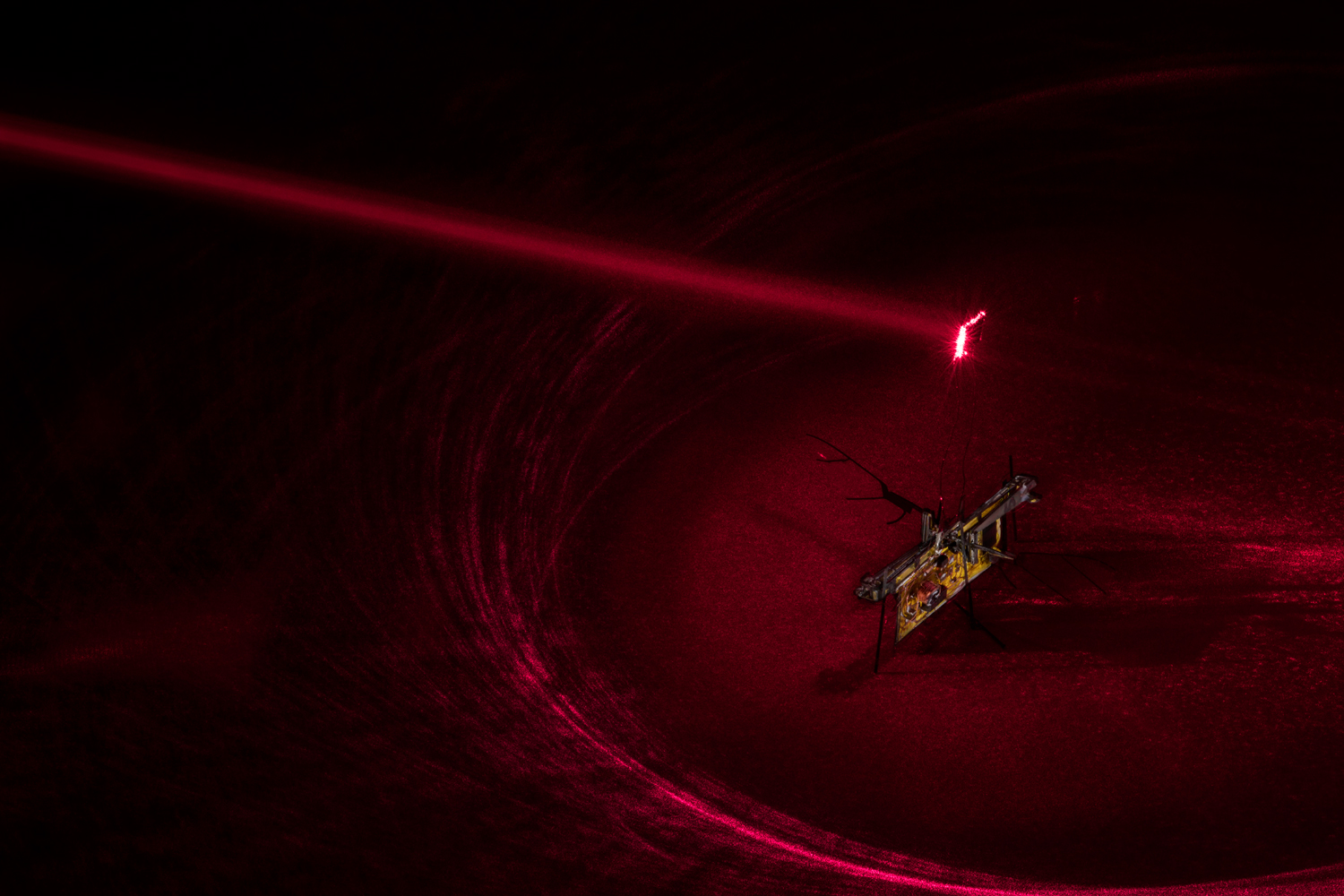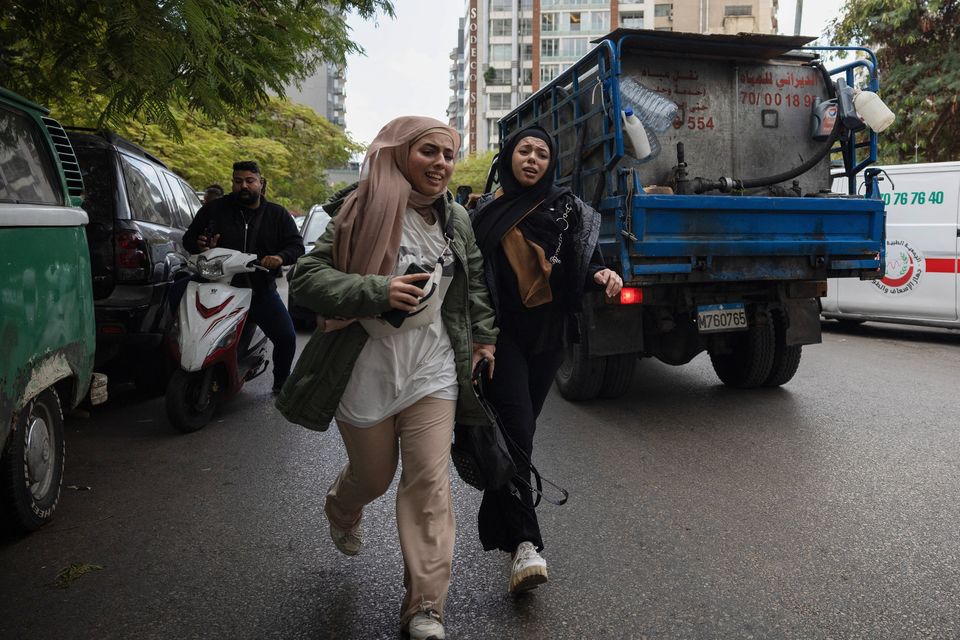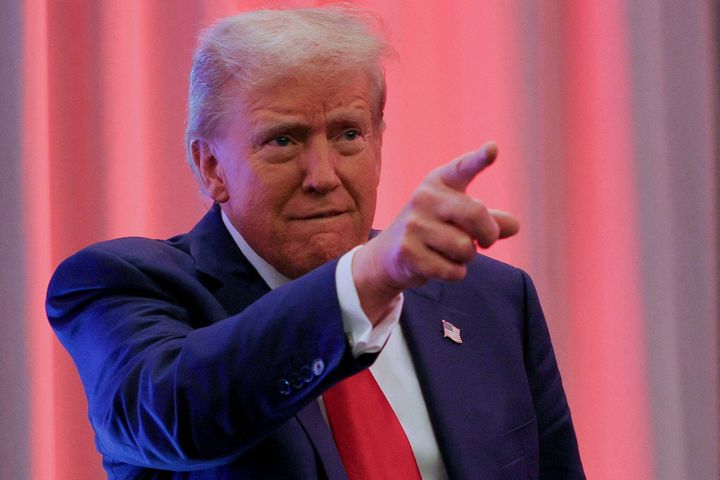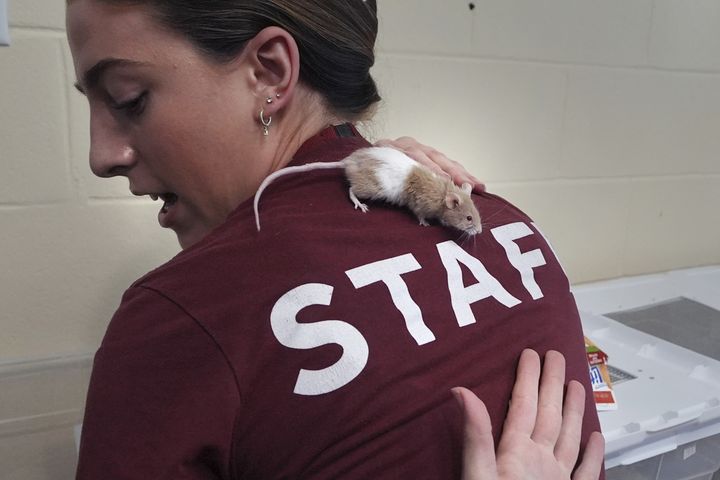Music
Trailers
DailyVideos
India
Pakistan
Afghanistan
Bangladesh
Srilanka
Nepal
Thailand
StockMarket
Business
Technology
Startup
Trending Videos
Coupons
Football
Search
Download App in Playstore
Download App
Best Collections
Technology
Making something fly involves a lot of trade-offs. Bigger stuff can hold more fuel or batteries, but too big and the lift required is too much. Small stuff takes less lift to fly but might not hold a battery with enough energy to do so. Insect-sized drones have had that problem in the past — but now this RoboFly is taking its first flaps into the air… all thanks to the power of lasers.
We&ve seen bug-sized flying bots before, like the RoboBee, but as you can see it has wires attached to it that provide power. Batteries on board would weigh it down too much, so researchers have focused in the past on demonstrating that flight is possible in the first place at that scale.
But what if you could provide power externally without wires Thatthe idea behind the University of WashingtonRoboFly, a sort of spiritual successor to the RoboBee that gets its power from a laser trained on an attached photovoltaic cell.
 &It was the most efficient way to quickly transmit a lot of power to RoboFly without adding much weight,& said co-author of the paper describing the bot, Shyam Gollakota. Heobviously very concerned with power efficiency — last month he and his colleagues published a way of transmitting video with 99 percent less power than usual.
&It was the most efficient way to quickly transmit a lot of power to RoboFly without adding much weight,& said co-author of the paper describing the bot, Shyam Gollakota. Heobviously very concerned with power efficiency — last month he and his colleagues published a way of transmitting video with 99 percent less power than usual.
Theremore than enough power in the laser to drive the robotwings; it gets adjusted to the correct voltage by an integrated circuit, and a microcontroller sends that power to the wings depending on what they need to do. Here it goes:
&To make the wings flap forward swiftly, it sends a series of pulses in rapid succession and then slows the pulsing down as you get near the top of the wave. And then it does this in reverse to make the wings flap smoothly in the other direction,& explained lead author Johannes James.
At present the bot just takes off, travels almost no distance and lands — but thatjust to prove the concept of a wirelessly powered robot insect (it isn&t obvious). The next steps are to improve onboard telemetry so it can control itself, and make a steered laser that can follow the little bugmovements and continuously beam power in its direction.
The team is headed to Australia next week to present the RoboFly at theInternational Conference on Robotics and Automation in Brisbane.
- Details
- Category: Technology
Read more: Watch a laser-powered RoboFly flap its tiny wings
Write comment (95 Comments)The White House has opted to eliminate the cyber coordinator role on the National Security Council, in what some see as a step back in strong cybersecurity policy. The duties formerly performed by the coordinator will be taken up by the other two senior directors of the NSCcyber team. Politico first reported the news.
Rob Joyce, who left the role on Friday, was chief of an NSA hacking outfit (Tailored Access Operations) last March. John Bolton, Trumpnational security advisor, ended the role with Joycedeparture; a memo sent to NSC employees explained that the elimination is to &streamline authority& in the Council. The other directors will pick up the slack.
The cyber coordinator role was first created by President Obama in 2009; its occupant in charge of, as you might expect, coordinating national cybersecurity policy across the many places in the government where it is being addressed.
In a time when cyber policy is increasing in importance and cyber-threats are clear and present in the countryelections and other critical infrastructure, it seems a strange decision to &streamline& rather than bolster an important cybersecurity-related office.
Trumpadministration has made noises about taking cybersecurity seriously, and in other areas has taken steps to improve things — for instance, its choice in August to elevate the MilitaryCyber Command and give it more independence. This added roles, rather than subtracting them. But Boltonmoves put more hats on fewer people, which would seem to complicate authority rather than streamline it.
It is possible that this is all part of a larger plan that will ultimately result in better decision-making capabilities and an improved cyber policy organ, but if so, the plan is unclear, even to those in the know.
Italmost as if the federal governmentpolicies on cybersecurity aren&t quite in sync. Maybe they should appoint someone to coordinate them!
- Details
- Category: Technology
Read more: White House sheds cyber coordinator role
Write comment (92 Comments)On December 31, 2015, I published my original call to arms for societyrational regulation of artificial intelligence before it is too late. I explained certain reasons why someone who is against solving problems through regulation would propose precisely that mechanism to help hedge the threats created by AI, and announced my proposed legislation:The Artificial Intelligence Data Protection Act (AIDPA).
Since 2015, we have witnessed AIrapidly evolving national and international growth and adoption that will soon impact every phase of mankindlife, from birth to death, sex to religion, politics to war, education to emotion, jobs to unemployment.
Three of many recent developments confirm why now is the time for theAIDPA: (1) a McKinsey study from late 2017 determined that up to 800 million workers worldwide may lose their jobs to AI by 2030, half of contemporary work functions could be automated by 2055 and other recent studies suggest as many as 47 percent of U.S. jobs could be threatened by automation or AI over the next few decades; (2) AI has now created IP with little or no human involvement and continues to be programmed, tested and used to do so; seemy Twitterfor a library of media reports on AI-created IP; (3) tech giants and regulators are starting to acknowledge that industries that create and use AI should be at least partially responsible for minimizing the impact of AI-displaced workers.
Now & and not later — society must address AIlegal, economic and social implications with regard to IP and employment. Current legislation does not adequately account for the new challenges, threats and needs presented by the impact of AI. The question is not &if& but &when& society will regulate AI. Rather than leave the job solely to politicians, industry should lead the way through the AIDPA. The urgency to finalize and enact the AIDPA cannot be understated.
This article addresses the AIDPAtwin focuses (AIthreats to intellectual property rights and the labor force) and presents a proposed framework to address them. The AIDPA is intended to provide industry with a voice in regulating AI while promoting its safe, secure and ethical use. The United States must lead the way in regulating AI, and leaders in industry, technology and ethics should join together to finalize and enact the AIDPA — the first and most important legislation of its kind.
Intellectual property considerations
The AIDPAfocuses on ownership of IP and the security risks resulting from machine learning that exceeds its initial programming and/or that by virtue of its programming becomes capable of autonomous human-like reasoning. For a host of legal and technical reasons, current IP laws cannot adequately account for IP created by AI working independent of human involvement or oversight (music, art, medical techniques, processes to communicate, processes to kill, etc.) or that exceeds its initial programming. AI also will acquire vast amounts of confidential information through its ability to collect, process, analyze and utilize mass amounts of data.
Chief AI officer
The AIDPA will require covered entities (see below) to employ a &chief AI officer,& who, among other things, is responsible for monitoring AI within the workplace, creating company-wide plans for AI-impacted employment, implementing the AIDPA regulations, enacting company-wide safeguards that monitor for and respond to malicious AI activity and accounting for AI-created IP.
Governing body
The AIDPA will also establish a governing body (the &AI Board&), staffed with industry, technical, ethical and legal experts, designed to bring specialized expertise and consistency to regulating AI in industry, encourage industry participation, promulgate safety and ethical regulations and adjudicate AI-related IP disputes. The AIB will also ensure that covered entities, through their CIAO, determine if and when certain AI should be outlawed, constrained in specific ways, and/or &terminated& and, where necessary, will enforce the AIDPAmandates by making these ultimate determinations.
Industry also will have annual AI-related worker displacement reporting requirements and the AIB will be responsible for analyzing and reporting on AIdisplacement impact on the labor market. Finally, the AIB will administrate and adjudicate disputes related to theAI Worker Realignment Program,which will be funded under the AIDPA.
Ownership, infringement and misappropriation
With regard to AI-created IP, there are many questions of ownership and liability for infringement and misappropriation. Under current IP laws, ownership (and standing to sue) are generally restricted to humans. The AIDPA will allow, under certain circumstances, for IP to be owned by the AI which created it (and in certain circumstances the entity or individual who &owns& the AI machine) in the context of addressing and defining IP rights for non-human created works, set the parameters for human ownership of AI-created IP and, as noted above, determine what AI is off-limits and when AI ownership and even the AI itself must be restrained or terminated.
With regard to infringement and misappropriation, existing law provides that a person or entity is generally liable for infringement regardless of their knowledge of the infringement. The AIDPA will limit the liability of corporations and humans for infringement to cases where there is knowledge of and/or active participation in the infringement.
Employment considerations
The AIDPA currently defines covered entities as government contractors and organizations with 300 or more employees or annual revenue in excess of $30 million that utilize AI or develop or deploy AI-created IP in a manner that results in (i)layoffsof at least 75 workers during a 30-day period on account of implementation and/or use of AI; or (ii) anAI facility openingdefined as a covered employer establishinga new facility(brick and mortar),an operation(i.e. a new logistics hub with autonomous trucks and no human drivers) and/ora line of business(i.e. a call center staffed solely with AI-machines) that utilizes AI machines to perform job functionsin lieuof what historically was performed by 40 or more humans or (iii) anAI Readjustment, defined as 30 or more workers who experience a reduction of 50 percent or more in their working hours or the loss of more than 75 percent of their job functions, either of which negatively alters the amount of their compensable time.
In the event of a triggering event, the AIDPA provides for certain notice requirements.For example, in the case of layoffs, the AIDPA requires covered entities to provide at least 60 days notice to the impacted workers, which period shall be extended to 180 days for employees who enter and continue approved educational and/or employment retraining through the AIDPA&sWorker Realignment Program. Impacted workers also will be eligible for certain supplemental payments funded through the AIDPA for specified periods. The AIDPA also requires covered entities to submit annual reports on the use of AI and its statistical impact on the labor market.
The dirty &T& word
Like it or not, the undeniable scope and societal impact of AI-caused worker displacement, coupled with the massive reduction in payroll expense for covered entities and the resulting loss in government revenue, mandates that covered entities play a substantial role in funding societyefforts to respond to and retrain displaced workers.
If it is to be assumed that mass worker displacement left unchecked has the potential to cause serious societal disruption and that AI taxation by politicians is inevitable, then this is not a provocative proposition. It is simply society being intellectually honest with itself. In 2017, Bill Gates proposed a tax on companies using AI which could be used to finance programs for the elderly and others with unmet needs. That same year, San Francisco Supervisor Jane Kim created a task force to explore an AI tax to fund education. And in Europe, Mady Delvaux, a member of the European Parliament, proposed a similar framework as part of an unsuccessful effort to enact AI legislation.
The question for industry is simple: Should the AI taxation framework be left solely to politicians, or should industry that will create and deploy AI play an important role in its formulation. The AIDPA answers that question by including a taxation component designed to secure the necessary funds for society to adjust to AIimpact.
While still being studied and finalized, the AIDPA favors a tripartite approach for covered entities that is calculated based on (i) a minimum AI &flat& tax; plus a percentage of (ii) human labor cost savings; and (ii) profits generated by AI. The AIDPA provides that the revenue generated from the AI tax shall be used solely for two purposes: (i) retraining workers displaced by AI through theWork Realignment Programand (ii) basic supplemental income payments for AI-displaced workers for a set period.
Questions remain regarding how AI in the workplace should be regulated, but now is the time for lawyers, industry, academia, regulators and politicians to come together to finalize and enact the AIDPA.
- Details
- Category: Technology
Read more: Society needs the Artificial Intelligence Data Protection Act now
Write comment (99 Comments)A few weeks ahead of its latest flagship announcement, HTC just revealed another piece of hardware. While the Taiwanese company has consolidated much of its mobile offerings in recent years, it announced today at the Consensus 2018 blockchain conference in New York that its upcoming Exodus handset is embracing everyonefavorite tech buzzword.
So, what makes a phone a blockchain phone, exactly Security and cryptocurrency support, mostly. According to HTCExodus landing page, &Our vision is to expand the blockchain ecosystem by creating the worldfirst phone dedicated to decentralized applications and security. With the release of the HTC Exodus we can now make this a reality.&
The Exodus will support Bitcoin and Ethereum, among others, courtesy of a universal wallet, secure hardware and decentralized apps. According to The Next Web, HTC has also outlined plans to create a native blockchain network, whereby cryptocurrency can be traded amongst Exodus users. Naturally, users will also be able to purchase the phone itself using cryptocurrency. That price and the release date, however, have yet to be revealed.
Therenot really a lot of information beyond that and the above drawing, but HTC is clearly gunning to make a splash as its numbers have shrunk in overall proportion to a declining smartphone market. Even with rapidly increasing awareness and interest in the cryptocurrency space, however, ithard to imagine Exodus making much of a splash.
- Details
- Category: Technology
Read more: Yes, HTC is working on a ‘blockchain phone’
Write comment (91 Comments)The InSight launch earlier this month had a couple of stowaways: a pair of tiny CubeSats that are already the farthest such tiny satellites have ever been from Earth — by a long shot. And one of them got a chance to snap a picture of their home planet as an homage to the Voyager missionfamous &Pale Blue Dot.& Ithardly as amazing a shot as the original, but itstill cool.
The CubeSats, named MarCO-A and B, are an experiment to test the suitability of pint-size craft for exploration of the solar system; previously they have only ever been deployed into orbit.
That changed on May 5, when the InSight mission took off, with the MarCO twins detaching on a similar trajectory to the geology-focused Mars lander. It wasn&t long before they went farther than any CubeSat has gone before.
A few days after launch MarCO-A and B were about a million kilometers (621,371 miles) from Earth, and it was time to unfold its high-gain antenna. A fisheye camera attached to the chassis had an eye on the process and took a picture to send back hometo inform mission control that all was well.
But as a bonus (though not by accident — very few accidents happen on missions like this), Earth and the moon were in full view as MarCO-B took its antenna selfie. Herean annotated version of the one above:

&Consider it our homage to Voyager,& said JPLAndy Klesh in a news release. &CubeSats have never gone this far into space before, so ita big milestone. Both our CubeSats are healthy and functioning properly. We&re looking forward to seeing them travel even farther.&
So far itonly good news and validation of the idea that cheap CubeSats could potentially be launched by the dozen to undertake minor science missions at a fraction of the cost of something like InSight.
Don&t expect any more snapshots from these guys, though. A JPL representative told me the cameras were really only included to make sure the antenna deployed properly. Really any pictures of Mars or other planets probably wouldn&t be worth looking at twice — these are utility cameras with fisheye lenses, not the special instruments that orbiters use to get those great planetary shots.
The MarCOs will pass by Mars at the same time that InSight is making its landing, and depending on how things go, they may even be able to pass on a little useful info to mission control while it happens. Tune in on November 26 for that!
- Details
- Category: Technology
Read more: First CubeSats to travel the solar system snap ‘Pale Blue Dot’ homage
Write comment (90 Comments)WHOOP,the worldmost informative wearable, is launching a new $30 subscription service for the everyday consumer, so everyone can get the benefits of its activity monitoring and analytics tools.
Itthe wearable that professional athletes and other performance-minded alpha-people use to find out how to optimize their workouts, sleep and rest periods to be the best selves they can be.
For $30 per month with a six-month mandatory commitment, anyone can become a member of what chief executive Will Ahmed is calling the WHOOP community.
Indeed, along with the hardware and analytics, which will report on and suggest recovery periods, ideal workouts and the optimal amount of sleep a body needs culled from the five variables WHOOPwearable collects 100 times per second, WHOOP is creating a social network where users can create teams and participate in challenges to encourage activity and use.
&We&ve now taken many learnings from the top performers and applied them to a consumer facing membership,& said Ahmed in a statement. &This is for a wider set of consumers — those that take performance seriously, whether that means securing a [personal record] on their next marathon, or improving their personal habits as a business executive on the road for work.&
The $180 sticker price for a WHOOP and membership to the service represents a deep discount from its previous pricing structure.
WHOOPdevices retail for a not-insignificant $500 for the wearable, with an extra nominal fee to switch out the default band for something with a bit more swag. With the new funding the company will look to accelerate its global expansion so WHOOP can dominate still-more sporting events, and become the new accessory that the high-powered quantified executive (or health-obsessed paranoiac) won&t want to live without.
Indeed, one of WHOOPselling points to potential new members is the insights that can be gleaned from its high-performance athletes.
The company has an amazing roster of customers among the elite of American sports. The wearable has been approved for universal in-game use inMajor League Baseball, while also getting a partnership with theNFLPA to track recovery times among football players. WHOOP actually is selling data on player performance to other teams so they can see how they stack up against the competition. Italso talking to NFL broadcasters about displaying WHOOP data during games.
An assortment of NBA players use the app, which could explain the involvement ofKevin Durant&snew investment fund and the appearance of David Stern among the individual investors (to date, the NBA is one of the leagues in the U.S. that WHOOP hasn&t been able to crack). But theDuke University menbasketballteam is using the companywearables (even though the Blue Devils suck).
In addition to the new membership service, WHOOP also said it added strategic investor Bose Ventures as a backer. Boseinvestment comes on the heels of the $25 million WHOOP secured in its last financing round earlier this year.
- Details
- Category: Technology
Read more: Super wearable WHOOP launches $30 subscription service — wearable totally included
Write comment (99 Comments)Page 5382 of 5614

 15
15











